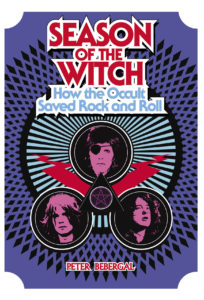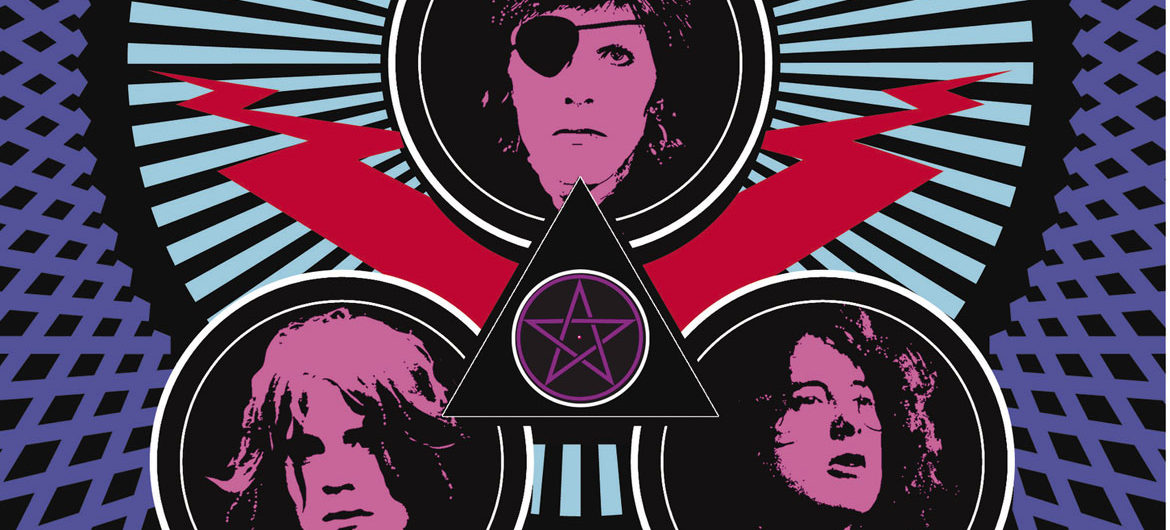In the beginning, there was Elvis Presley shimmying as he sang the new rock ‘n’ roll for 1956 white America. The young things in the audience were entranced, but the elders were troubled by the signature way Mr. Presley shook his hips as he danced. Concerned by sex and animated by racism, they accused the music’s sensuality and black rhythms of being too…exciting. It would surely lure the young into temptation. Some called it the Devil’s music.
But, Cambridge author Peter Bebergal recounts, one time Elvis “was asked: Where did you learn to dance like that? He answered: I learned it within my [Pentecostal] church. This is how we worshipped.”
Help Wonderland keep producing our great coverage of local arts, cultures and activisms (and our great festivals) by contributing to Wonderland on Patreon. And sign up for our free, weekly newsletter so that you don’t miss any of our reporting.
Bebergal—the writer of the book “Season of the Witch: How the Occult Saved Rock and Roll,” which was published in 2014, and “Strange Frequencies: The Extraordinary Story of the Technological Quest for the Supernatural,” which is due out this October—argues that the history of rock ‘n’ roll that we’ve been handed down is incomplete.
In a talk entitled “Dionysus Stardust: Theater, Masks, and the Spectacle of Rock and Roll” that he gave to the Harvard Theosophical Society at the Cambridge university’s Center for the Study of World Religions on Monday afternoon, he said that usual accounts leave out rock’s roots in pagan faiths and the occult, in spirituality outside the white Western religious mainline of Christianity and Judaism. And this underground spiritual influence, he says, is an overlooked part of what why the music so grabs people’s souls.
The sensual dancing, the costumes and mask-like makeup, the ecstatic and ritualistic performances of rock ‘n’ roll (in his talk he focused primarily on white male rockers) are part of a tradition that Bebergal says traces back to secret societies of the Western occult as well as African faiths forced underground by the violence of American slavery. He points to African American ring shouts based in Christian music and faith while at the same time being “drawn from African pre-Christian spiritual practices.”
He sees connections to the rituals of Free Masonry, the visionary art and poetry of William Butler Yeats, the Jewish mysticisim of the Kabbalah, tarot, “ceremonial magic,” and late 19th century spiritualism.

“There was a huge movement that felt rationalism was coming to strip us of a kind of spirituality,” Bebergal says of the late 19th century. “Rock ‘n’ roll is really just a symptom of these elements. … It saw itself as pushing up against conventions. When you see yourself on the margins and pushing up against convention, it’s only natural that you would turn to these forms that were heterodox.”
Ultimately, Bebergal believes, rock ‘n’ roll’s “energy is Dionysian and it’s much more Dionysian than it is demonic or devilish.”
The Greek god of fertility (sex) and wine and theater is a model for rock’s challenge of authority, its embrace of dance and sex and gender bending, it pursuit of ecstatic experience.
“The worship of Dionysus originally happened in performance. It happened in theater,” Bebergal says, in reenactments of the deity’s biography. “That happened through the mask. … This is how the god is made manifest. The mask isn’t a costume so much as the way the god enters the world.”
In rock ‘n’ roll, Bebergal finds examples of these spiritual influences and trappings in Elvis and the spectacles of Pink Floyd’s 1960s trance-inducing performances with dancers and flickering films. “It was an expression of the psychedelic experience, to heighten the psychedelic experience,” Bebergal says. “It was to charge the audience with this ecstatic sensibility.”
Anther example is Arthur Brown, who sang “I am the god of hellfire” in the 1960s with his painted face with skull-like makeup and wearing a crown that was actually ablaze with fire. “In some ways, he saw himself as a shaman,” Bebergal says. “He wanted there to be this transformative experience.”
“We start to see the way our consciousness works inside these kinds of experiences,” Bebergal says. If we see a stage magic show, “we allow ourselves to be fooled. We want to be tricked. … We want to inhabit a place where we’re not quite sure what’s going on.”
From Brown, Bebergal looks to Alice Cooper and Led Zeppelin. He sees Zeppelin singer Robert Plant in the 1970s as pinnacle of this sort of ecstatic rock ‘n’ roll performance, a Dionysian figure who teased usual gender binaries. It helped that Plant telegraphed his interest in the English occultist Aleister Crowley as well as rumors that the band was cursed.
Bebergal points to the Egypian inspired costumes and Afrofuturist jazz of Sun Ra. He highlights how David Bowie also adopted personas—Ziggy Stardust, Aladdin Sane, Thin White Duke—“inhabiting these deific entities. … They are these kind of cracked deities.”
Bowie “also had a little bit of nuzzling a little too closely to the fascistic idea of how performance can manipulate and act as an element of control,” Bebergal says. “There are a few interviews where he’s talking very nicely about the Nazis” as genius manipulators. “He later would say that it was poor judgment to not acknowledge the historical truth.”
Bebergal says, “There’s a lot of tension in the occult-esoteric communities because the alt-right has recently started to own a lot of esoteric symbols.”
After Bowie, Bebergal points to the costumes of Kiss, to the spectacles of Ozzy Osbourne, to Madonna’s faux Egyptian rite during the 2012 National Football League Super Bowl halftime show, to the ominous droning music of the Seattle doom metal band Sunn O))), which formed in 1998, and performed with hooded robes and smoke machines.
Bebergal says, “You go into a trance state when you’re in one of their shows. And then to feed that state with smoke and cloaks, there is a transformation that takes place. And it is a very ancient way of doing religious business.”
“Particular kinds of performative and audio things can transform us,” Bebergal says. “What’s real is what happens during the performance and being able to take in these gestures acts as a super-charged arrow” to our unconscious, to the “occult imagination.”
Help Wonderland keep producing our great coverage of local arts, cultures and activisms (and our great festivals) by contributing to Wonderland on Patreon. And sign up for our free, weekly newsletter so that you don’t miss any of our reporting.
